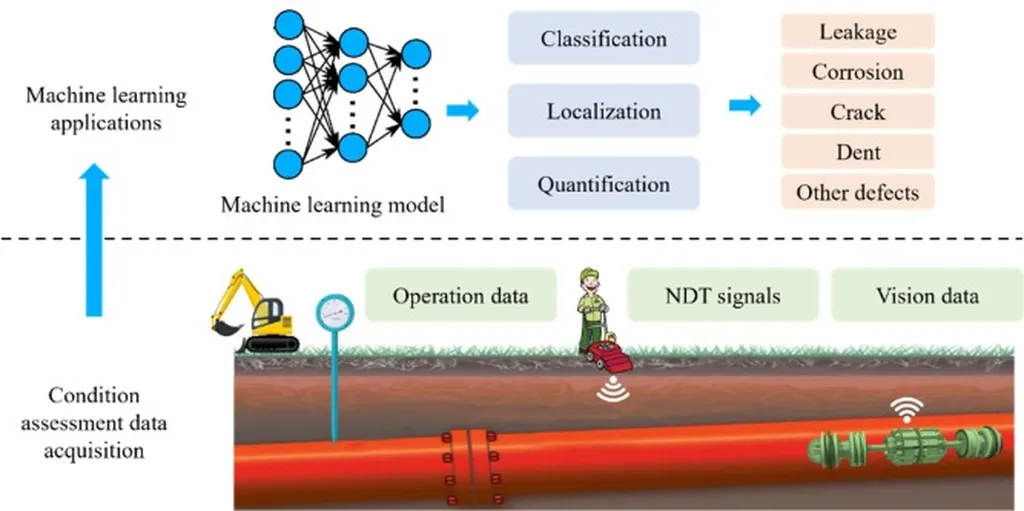In the relentless pursuit of enhancing pipeline durability and safety, a groundbreaking study has emerged that could reshape how the energy sector approaches repairs in harsh environments. Thaer R. Flaifel, a researcher from the Department of Mechanical Engineering at Shahid Chamran University of Ahvaz, has delved into the intricate world of composite materials and their effectiveness in repairing damaged steel pipelines.
The study, published in *Discover Materials* (which translates to *Discover Materials* in English), focuses on the often-overlooked factor of defect geometry in pipeline repairs. Flaifel and his team investigated how the shape of through-wall holes in steel pipelines influences the effectiveness of composite repairs under hydrostatic pressure. This is a critical area of research, as pipelines exposed to high humidity and temperatures are particularly vulnerable to damage.
The team evaluated three types of plain-woven composite materials: glass, carbon, and a balanced hybrid (a combination of carbon and glass layers). Their findings were striking. Circular defects repaired with glass/epoxy composites withstood 46.6% higher hydrostatic pressures compared to square defects of equal cross-sectional area. “This significant difference highlights the importance of defect shape in the repair process,” Flaifel noted. “By understanding and optimizing the geometry of defects, we can greatly enhance the performance of composite repairs.”
The study also revealed that carbon fiber composites exhibited superior pressure resistance compared to glass fiber, and increasing the number of composite layers enhanced the overall failure pressure. However, increasing the defect area significantly reduced failure pressure, underscoring the need for precise and tailored repair strategies.
Flaifel’s research employed a Taguchi analysis, which showed that the type of reinforcing fabric and the number of layers were primary factors influencing failure pressure, with defect shape also playing a significant role. “Our findings demonstrate that reducing stress concentration through modifying defect shape can significantly increase failure pressure,” Flaifel explained. “This has profound implications for the energy sector, where pipeline integrity is paramount.”
The commercial impacts of this research are substantial. In an industry where downtime and repair costs can be astronomical, the ability to optimize composite repairs based on defect geometry could lead to more efficient and cost-effective maintenance strategies. This could translate into significant savings for energy companies and enhanced safety for workers and the environment.
As the energy sector continues to grapple with the challenges of aging infrastructure and harsh operating conditions, Flaifel’s research offers a promising path forward. By leveraging the insights gained from this study, engineers and technicians can develop more robust and reliable repair methods, ultimately contributing to the longevity and safety of pipelines worldwide.
This research not only sheds light on the critical role of defect geometry in composite repairs but also paves the way for future innovations in the field. As Flaifel’s work continues to gain traction, it is likely to inspire further investigations and advancements, ultimately shaping the future of pipeline maintenance and repair.

